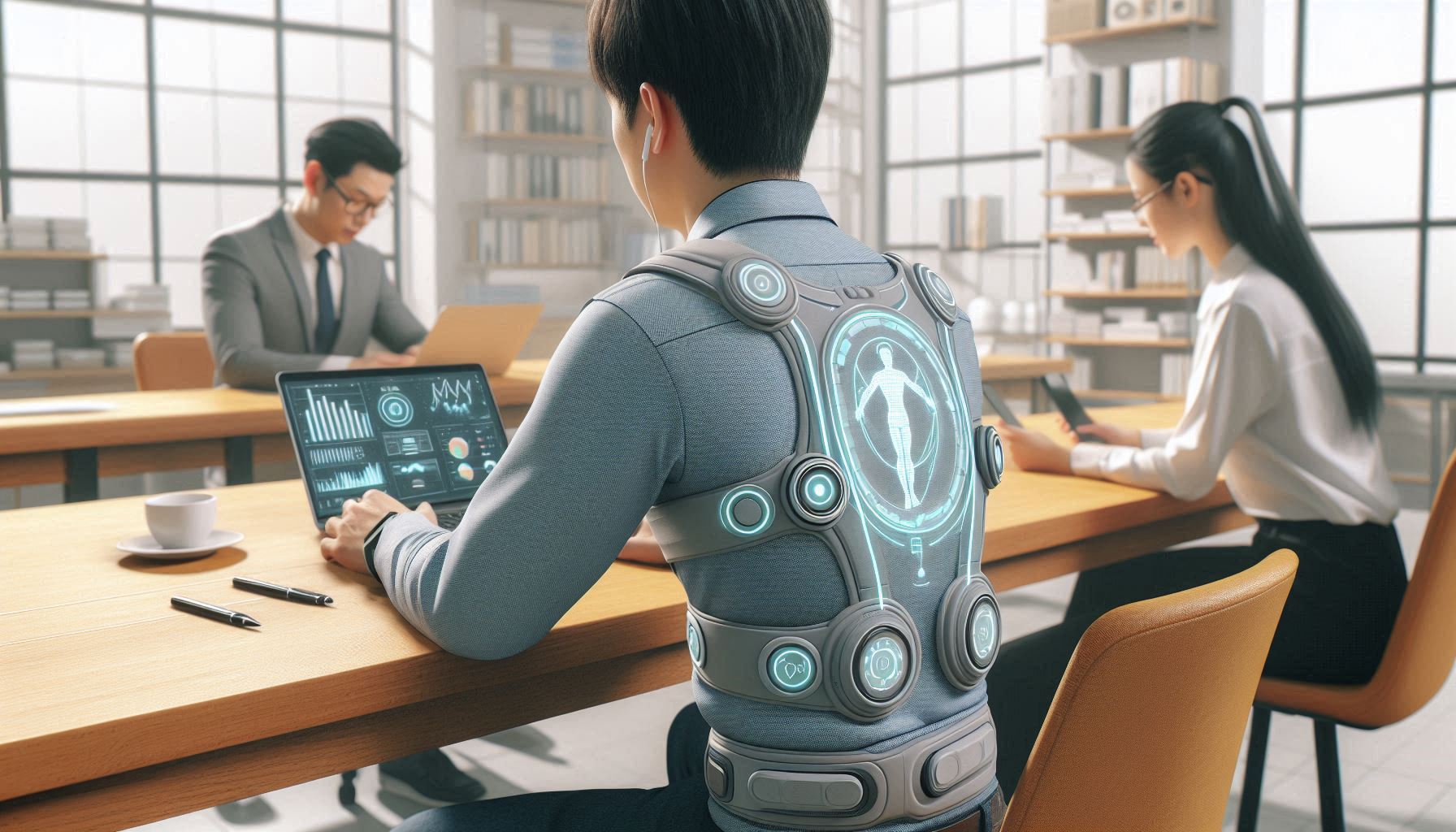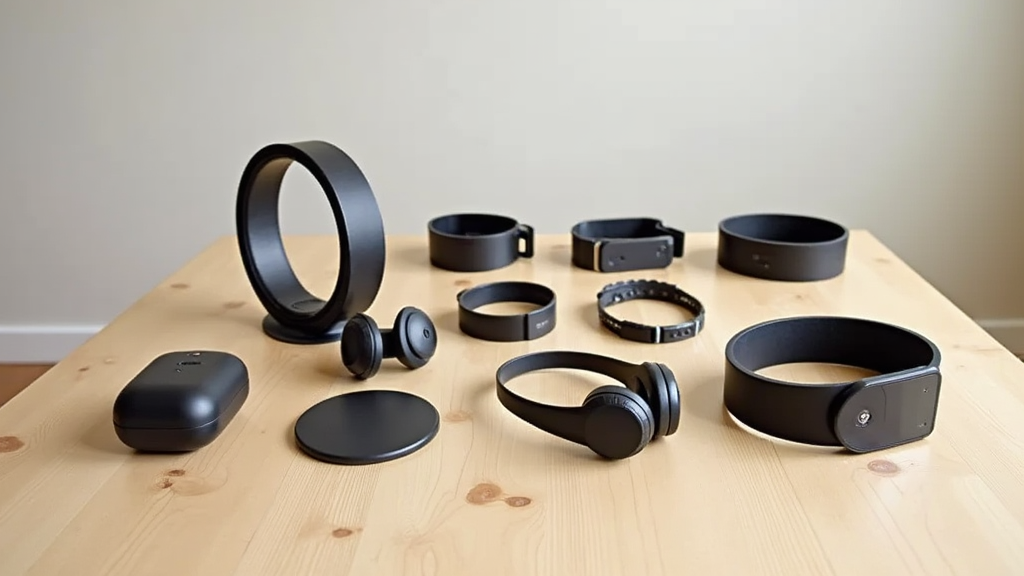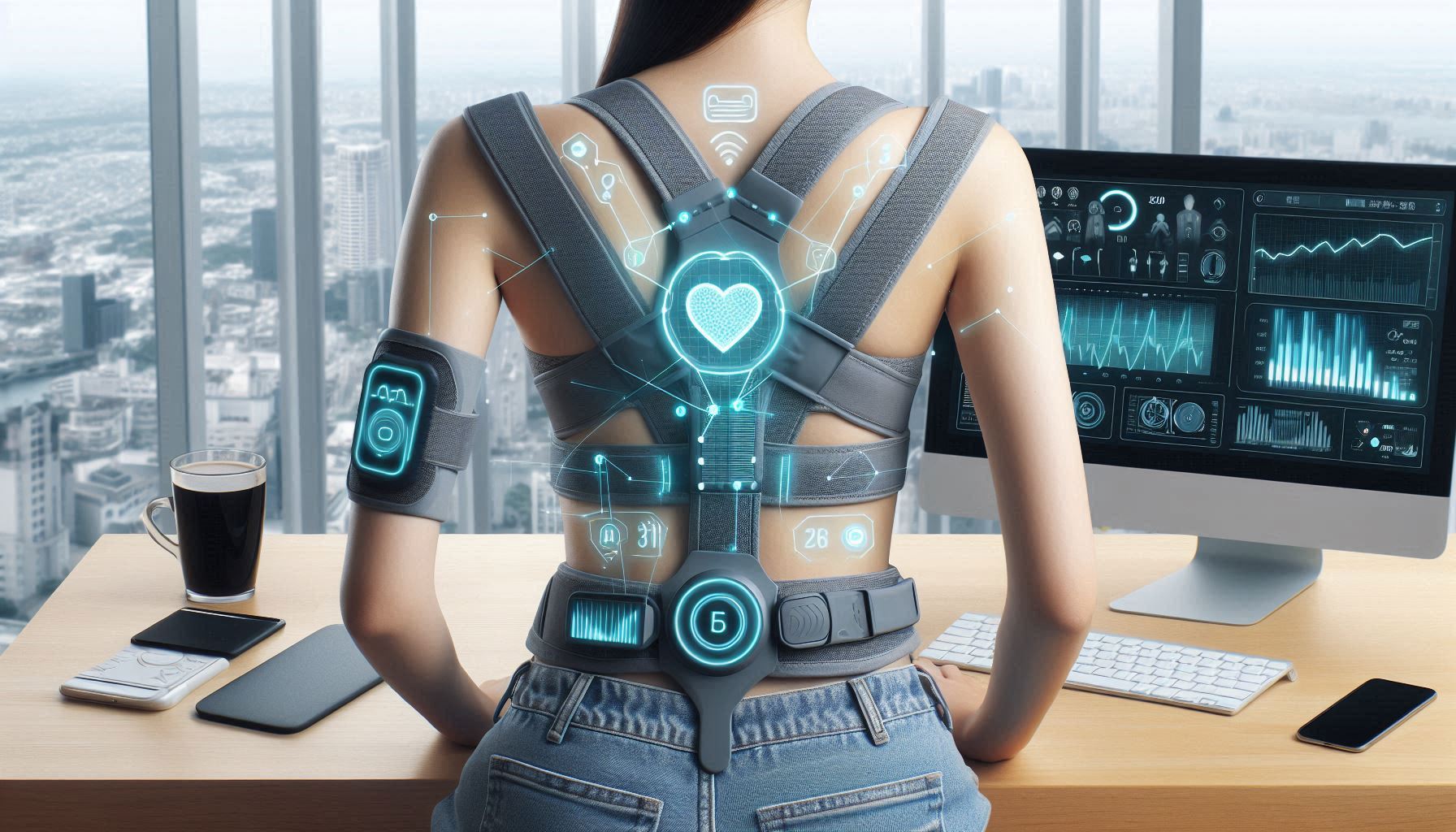Welcome to this article from Vertevia. It’s titled Wearable Tech: Review Of 6 Best Smart Posture Devices. Wearable tech isn’t just about fitness trackers and smartwatches anymore. If you spend a lot of time sitting at a desk or hunched over your phone, posture tracking wearables can come in pretty handy. I’ve tested a range of smart posture devices, and today we will share our thoughts here to help you sort through what’s worth your time and money.
Why Good Posture Matters (And How Wearable Tech Can Help)
Maintaining good posture goes beyond looking confident. It can keep annoying neck and back pain at bay. Poor posture sometimes sneaks up after long hours in front of screens or working remotely, and it can even mess with your focus over the day. That’s why I think tech that nudges you to sit or stand straighter can really help change those hard to break habits.
Wearable posture correction devices typically use sensors and motion tracking tech to notice when you’re slouching. Some give gentle vibrations as reminders; others connect to your phone and show trends over time. It’s pretty cool to have data in your pocket and a little nudge when your posture slips during a Netflix binge or work marathon.
Market reports point out how much the health tech world has expanded. Smart posture trackers fit right into the mix, with options for different needs and budgets. Whether you want something subtle under your shirt or a more robust system for active feedback, there’s probably a device that checks your boxes.
Types of Smart Posture Wearable Tech
Smart posture wearable tech comes in a few main styles. Here’s a quick rundown of what’s out there:
- Clip on devices: These attach to your shirt or bra strap, usually between your shoulders or on your chest.
- Posture corrector braces: Wearable harnesses with built in sensors that gently pull your shoulders back.
- Smart clothing: Shirts or undershirts with embedded posture sensors.
- Sensor stickers: Lightweight, adhesive sensors you can stick directly to your upper back.
Each style has its perks, and your pick really depends on what feels most comfortable and compatible with your daily routine.
Wearable Tech-Review Of 6 Best Smart Posture Devices
I’ve rounded up six smart posture devices I think stand out for their ease of use, value for money, and tech features. Here’s what I found after putting them through day to day situations.
1.Upright Go 2
The Upright Go 2 is a slim sensor you stick between your shoulder blades. It connects to a mobile app and vibrates when you start slouching. Setting it up is fast, and the reminders are subtle. I found the real time tracking in the app really useful for seeing my posture progress over a few weeks.
Highlights: Barely noticeable under clothing, app sync, adjustable training plans.
2.Posture Reminder Smart Braces
Think of this as a classic posture correcting harness mixed with smart tech. These braces usually have a sensor built into the back that vibrates if you roll your shoulders forward too much. I like these for days when I need more hands-off support, such as working long hours at my desk.
Highlights: Added shoulder support, adjustable straps, quick charging.
3.Lumo Lift
Lumo Lift is a magnet clip gadget that you place on your shirt near the collarbone. The device tracks your upper body position using accelerometers. The companion app is user friendly and shows both real time alerts and daily stats. I appreciated its battery life. One charge could last me a few days.
Highlights: Easy to move between outfits, discrete, solid battery life.
4.BackEmbrace Sensorized Posture Band
This smart posture band includes motion sensors woven into the fabric. It pairs with a smartphone app and gently tugs on your shoulders for support, while also collecting data on movements. It’s more comfortable than rigid braces, especially for active days or if you’re on the go a lot.
Highlights: Flexible fabric, subtle reminders, useful posture analytics.
5.Zikto Walk
This is a smart band you wear on your wrist, originally designed for tracking arm swings while walking. Surprisingly, it works great for catching slouching habits. Off kilter arm movement often lines up with poor posture. Its app offers insight into both posture and step quality.
Highlights: Wrist based design, insights for walkers, multipurpose tracking.
6.Spine Intelligent Sensor Stickers
These are thin sensors that stick to your back like a Band Aid and track how much you tilt or roll. They’re light, single use, and perfect for short term posture checks or rehab. I found them good for occasional check ins rather than long term correction.
Highlights: Disposable, ultralight, connects to an easy to use app.
Important Stuff to Know Before Buying a Smart Posture Device
Buying a smart posture device isn’t quite like grabbing a new smartwatch or earbuds. Here are a few things I learned that can save you frustrations down the road.
- Comfort: If a device pinches, scratches, or feels weird, you probably won’t use it for long. Try to pick one that matches your lifestyle. If you hate straps, stick to stickers or clip ons.
- Battery Life: Some gizmos need daily charging, while others last for several days on a charge. If daily charging annoys you, take note of this spec.
- Data and App Quality: The app experience can make or break your relationship with the device. I recommend checking reviews for app stability, update schedules, and privacy settings.
- Vibration Alerts: Strong, constant buzzes can get annoying or distracting. Go for a device with adjustable feedback, or one that lets you turn off alerts during meetings or commutes.
- Outfit Compatibility: If you wear dresses, tank tops, or clothing without a collar, some clip on devices won’t fit well. In that case, sensor stickers or bands could be a better fit.
Comfort and Fit
Being a bit picky about comfort pays off. After a few days, anything pinchy, itchy, or too bulky tends to end up in a drawer. For example, the Upright Go 2 and Lumo Lift are both lightweight and pretty much disappear under a shirt. If you want help from a physical object, smart braces like Back Embrace are comfier than more rigid options.
Battery and Charging
If, like me, you’re forgetful about plugging in your smart devices, double check battery specs. The Lumo Lift usually needs a charge every three days, but some posture braces still use tiny batteries that can be fiddly to swap. A long lasting rechargeable battery is a big plus if you’re always on the go.
App Integration
I’ve seen lots of differences in app quality. Some apps make it easy to check trends, track progress, or silence alerts right from your phone. Make sure your device works with your type of phone (iOS or Android), and peeking at user reviews will help you spot if any bugs pop up. Also, consider if the app keeps your data private and is easy to understand. A clunky app can really drag the experience down.
Tips to Get the Best Results From Your Device
Smart Tech Posture devices can train your body, but a few small adjustments will help them work better for you:
- Start with short sessions: Use the device for about thirty to sixty minutes a few times daily as you build new habits. Gradually increase usage as your awareness grows.
- Focus on awareness, not just correction: Instead of only reacting to buzzes, check in with your body throughout the day. Noticing your own patterns means you’ll develop more lasting habits.
- Pair it with movement: Stretch or stand up every half hour. Movement helps balance out the static hours that lead to most slouching. Try quick shoulder rolls or neck stretches during your breaks.
- Track your progress: Celebrating a few days of improvement can be a great motivator. Devices that show streaks or progress graphs make this easier and turn posture tracking into a bit of a game.
Smart Tech Posture Devices in Real Life
On the job or at home, posture wearables can fit into plenty of daily routines. In my workflow, I used Upright Go 2 during long laptop sessions and switched to Zikto Walk for lunchtime walks and errands. Combining reminders with simple stretches helped cut down on tension headaches by the end of the week. It was eye opening to see data that matched how I felt physically.
- Office Workers: Subtle devices like Upright Go 2 or Lumo Lift work well under office clothes and go unnoticed during meetings or conferences.
- Fitness Fans: For gym goers, bands like BackEmbrace and Zikto Walk double as form checkers. They’re worth checking out for complex movements or functional training sessions where keeping good posture is essential.
- Students: Most posture trackers are light enough to toss in a backpack or slip in a pocket, making them easy to bring along for study sessions or library time. Keeping posture in check during long lectures can also help avoid soreness.
Frequently Asked Questions
Here are some of the questions I’ve been asked about smart posture wearables:
Question: Do smart posture devices actually improve posture long term?
Answer: They work best for building awareness and nudging you toward better habits, but you’ll see the biggest benefits if you also stay active and regularly stretch. Think of them as a kickstart to your routine rather than a magic fix.
Question: Can I wear a posture device all day?
Answer: It’s usually better to use them for short periods at a time. Your muscles need breaks, and overusing a corrective device can make them lazy. Aim for a few dedicated sessions throughout your day rather than wearing one non stop.
Question: Are these devices safe for kids or older adults?
Answer: Most are designed for adults, but some adjustable models work for older teens. For kids or older adults, talking to a healthcare provider before regular use is a good move. Always make sure the device doesn’t cause discomfort or restrict movement.
Question: Will clothes get in the way?
Answer: Some clip on devices need collars or straps, while sensors and bands are more versatile. It depends on what you’re wearing day to day, so you may want to have a couple options.
Final Thoughts on Smart Posture Tech
It’s pretty cool to have wearable tech that helps you develop better posture, even if you’re not perfect all the time. Mixing a bit of sensor driven nudging with mindful breaks and stretches goes a long way. If you’re looking for daily reminders and handy data without the hassle, a smart posture device is a useful addition to your self care routine. While these gadgets aren’t a substitute for moving and stretching regularly, they can give a helpful push in the right direction. The bottom line is finding a posture gadget that fits your lifestyle just might help you stand taller, feel better, and move through your day with less strain and more confidence.
Thankyou so much for taking the time to read this article on Wearable Tech- Review Of 6 Best Smart Posture Devices. I really do hope that you have found it helpful in your search for smart posture tech. If you would like more information on smart posture gadgets and smart apps, take a look at our blog page! We have plenty of really helpful and informative articles on a range of subjects. You might like reading a couple of our related articles which are titled 6 Best Smart Posture Exercises and Top 10 Best Posture Correctors 2025.
**Here is a bit of transparency. Our website www.vertevia.com does contain affiliate links. So, if you did make a purchase through the website, we may receive a small commission. This is at no extra cost to you whatsoever. It’s just a way for you to support us as we continue to bring you top quality content**
All the best!
Eamon




